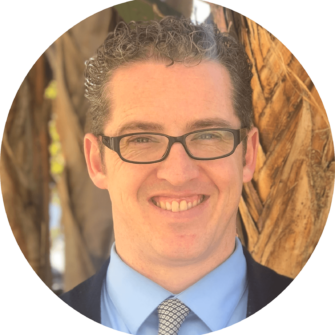Free Financial Literacy Resources — Learn and Teach Personal Finance On a Budget

The movement to teach financial literacy in high school is gaining ground, but some states continue to lag. That leaves teachers without a budget for personal finance instruction and students without the necessary financial foundations.
In these cases, teachers may wish to step in, but it’s tough when the training, guidance, and money aren’t there to support them.
The good news is that a greater availability of resources; from nonprofits, government agencies, and financial institutions, provides educators with access to free, high-quality teaching materials.
Are you ready to give your students the knowledge and skills they need for financial success? Here are several resources to help you do it.
Online financial literacy resources
OppU
OppU — that’s us — is the financial literacy arm of OppLoans. The centerpiece of OppU is a standards-aligned, online financial literacy curriculum that covers the fundamentals of personal finance through interactive videos and quizzes. Users create a profile and advance through four modules: spending, budgeting and saving, credit, and debt and loans. OppU also publishes financial tips and materials: — worksheets, ebooks, and videos — on its blog. All materials areis free to use.
Apps
Apps for teaching financial literacy are a great tool for tech-savvy students. Start with a simple savings app that can be useful for young students to practice reaching savings goals. Or try a budgeting app, like You Need a Budget (YNAB), for advanced students who are earning an income and balancing their expenses.
CNN Money
CNN’s Money Essentials is a free database of online financial lessons covering many topics. Learn about budgeting, setting financial goals, and more. Each lesson culminates with a test to track your performance as you go.
EconEdLink
EconEdLink is a free online resource that contains economics and personal finance resources for K-12 educators. Materials include lesson plans, webinars, and news-related activities.
Goodwill Community Foundation Learn Free
GCFGlobal.org was launched by the Goodwill Community Foundation. It offers over 300 topics that include over 6,000 lessons, 2,000 videos, and 50 interactives and games. Many of the lessons focus on job readiness, but there is a great section on money basis, too. For example, learn how to create a budget and live within your means.
InCharge Education Foundation
InCharge is a nonprofit dedicated to empowering consumers through personal finance education. Schools and universities can partner with InCharge on customized programming about topics that include starting a savings account, avoiding over-borrowing on student loans, and comparing cell phone plans.
Jump$tart Coalition
Jump$tart provides a no-cost teacher training initiative that’s designed to ensure consistency and rigor in national training programs. Jump$tart, a national nonprofit with local chapters in 49 states, also hosts the National Educator Conference, which brings together educators, resources, support, and expertise on financial education. Even better, educators can attend the conference on fully-funded scholarships.
Money Smart
The Federal Deposit Insurance Corporation (FDIC) is the independent government agency that insures deposits and supervises financial institutions. Through its Money Smart program, it provides tools to help people of all ages increase their financial skills. Among the resources it offers are free lesson plans that are available for download.
Moneythink
Moneythink is a nonprofit that works to increase the financial capability of young people by training college-age volunteers to become financial mentors for high school students.
MyMoney.Gov
MyMoney.Gov is a product of the Financial Literacy and Education Commission, which contains a number of resources that educators may find useful for teaching financial education. The site includes in-depth lesson plans covering financial principles and has a tools page with links to online calculators and worksheets.
National Endowment for Financial Education
The National Endowment for Financial Education (NEFE) delivers quality financial literacy materials to educators and their classrooms. Additionally, it offers an online CashCourse tool for college students, administrators, and other learners.
Practical Money Skills
Practical Money Skills is Visa’s financial literacy initiative. The website provides free lesson plans and fun, interactive games for students.
In-person financial literacy resources
If you prefer in-person financial literacy classes and workshops, there are options for that.
Connect with a local college, university, credit union, bank, or nonprofit to explore their offerings. Chances are, there are plenty of free programs and events available.
California Council on Economic Education
Many national and local groups offer a robust array of dedicated in-depth support too. For instance, the California Council on Economic Education (CCEE) offers several free teacher-development resources to help California educators incorporate economics and personal finance into their classroom instruction. The organization also hosts both state and national student contests that allow teachers and students to gain financial knowledge through experiential learning. If you’re not a California resident, search for an equivalent organization with programming in your state.
Colleges and universities
Colleges and universities are stepping up their financial literacy programming for their students. Many now have dedicated financial wellness departments mentoring students on money management tactics. But that’s not all; colleges and universities often team up with local schools and nonprofits to share their resources. For instance, college students might offer to present on personal finance in your K-12 classrooms.
Financial institutions
Financial institutions are huge supporters of financial literacy programming on a local and national level. From big banks to credit unions, these companies are spearheading bringing resources to their communities.
Financial Smarts for Teachers
This professional development program is for all K-12 teachers and focuses on building their financial capability. It uses a curriculum jointly developed by CCEE, CalCPA, and the California Jump$tart Coalition titled Financial Smarts for Teachers. Teacher-specific personal finance topics include budgeting on a 10-month pay cycle, specific loan or housing programs available to educators, teacher retirement, and more.
Libraries
Libraries often provide financial literacy programs and services on general money topics. These topics are aimed to support those in the community to reduce debt, improve credit scores, save money, and buy a home.
National Financial Educators Council
The National Financial Educators Council (NFEC) offers free national workshops on a variety of financial topics. Register online to receive notifications about upcoming events in your area.
Tips from a financial educator
Josh Mitton is the Chief Program Officer at the California Council on Economic Education. He trains educators to teach personal finance. Here are the top five tips that he shares to help educators better connect with their students. Hint: he stresses the importance of creating a solid budget.
- Be realistic — not discouraging.
- Relate, relate, relate to the students’ interests and concerns — not yours.
- Address behavioral strategies and challenges of personal finance choices.
- Anchor concepts around a single thing, such as a budget, for instance. You can teach a variety of personal finance concepts and their roles, but it integrates around the budget and relates back to the budget.
- Teach budgets as a proactive, positive, guiding force in one’s financial life. A budget is a spending plan, a roadmap of your priorities, and a tool to help you achieve your goals and live the life you want.
Bottom line
It’s crucial for educators to bring financial literacy instruction to the classroom. Thankfully, there’s no shortage of free financial resources, so don’t despair if your school doesn’t provide a budget or training.

Joshua Mitton is the Chief Program Officer at the California Council on Economic Education. After reading his first economics textbook in a single weekend, Mitton went on to obtain a Bachelor of Arts in Applied Economics from Idaho State University. He relocated with his family to Southern California to pursue graduate studies at Cal State Fullerton. During his time there, he worked as a graduate assistant for the Center for Economic Education and gained a taste for expanding others’ understanding of economic and personal finance principles.
Please note the below article contains links to external sites outside of OppU and Opportunity Financial, LLC. These sources, while vetted, are not affiliated with OppU. If you click on any of the links you will be sent to an external site with different terms and conditions that may differ from OppU’s policies. We recommend you do your own research before engaging in any products or services listed below. OppU is not a subject matter expert, nor does it assume responsibility if you decide to engage with any of these products or services.



